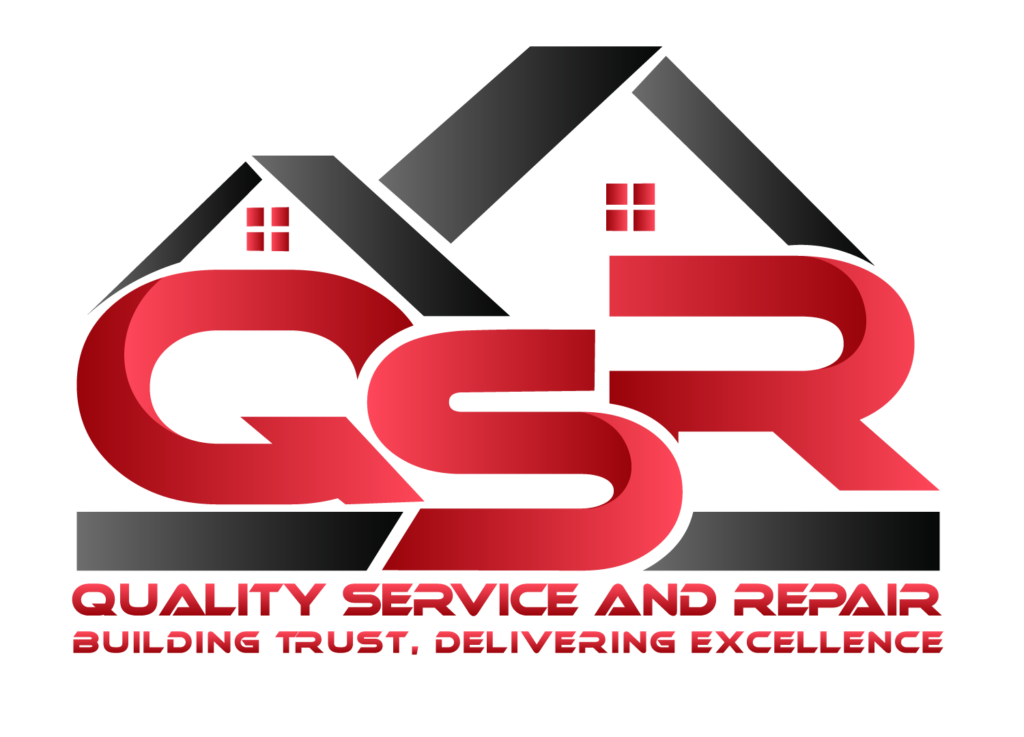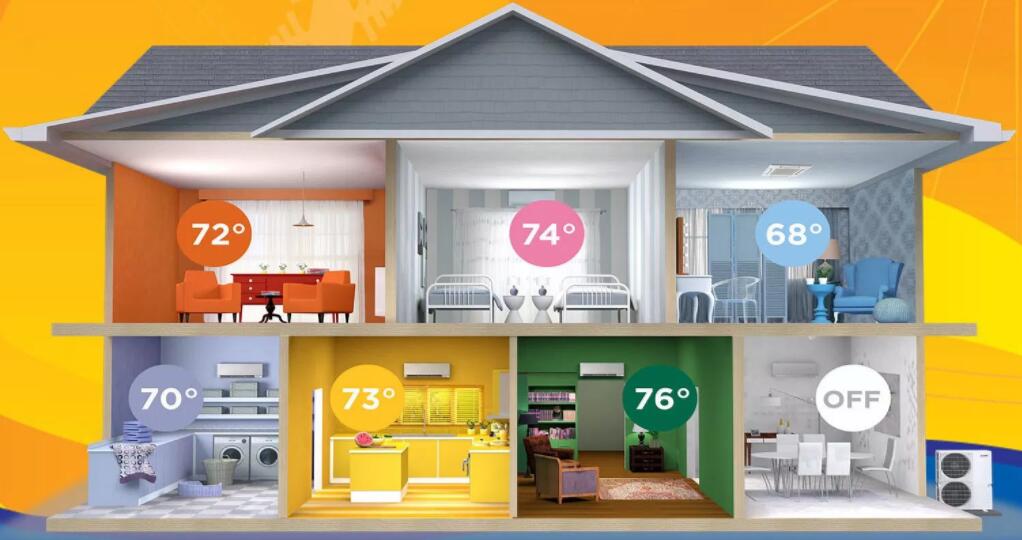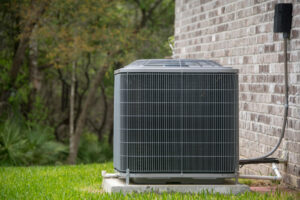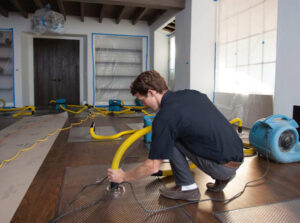Picture this: You walk into your home, and it’s as if each room knows exactly what you need. The living room is perfectly cozy, the kitchen just the right temperature, and the bedrooms are comfortably temperate. It’s not magic; it’s the wonder of HVAC Zoning Systems.
Welcome to the future of home comfort where you’re in control. No more heating or cooling unused spaces, no more thermostat battles, and certainly no more wasting energy. Zoning systems make it possible.
In this article, “Zoning Systems: The Smart Way to Save – Understanding HVAC Efficiency,” we’re here to unravel the secrets of HVAC efficiency through zoning, and we’re doing it just for you. We’ll explore what zoning systems are, how they work, and why they are your smart choice for ultimate comfort and savings. Get ready to take the reins of your indoor climate and embrace unmatched energy efficiency. Let’s dive into the world of HVAC zoning, tailored just for you.

What Are HVAC Zoning Systems?
Imagine a house where each room has its thermostat, each area has its climate, and you have the power to personalize it all. HVAC zoning systems bring this vision to life.
In simple terms, an HVAC zoning system divides your home into different zones, each with its thermostat and individualized climate control. This means that you can adjust the temperature in various areas of your home independently. No more heating or cooling the entire house when you only need it in certain spaces.
Zoning systems are comprised of several key components:
- Zone Dampers: These are responsible for controlling the airflow to different zones. When a particular zone needs heating or cooling, the dampers open or close to direct the conditioned air where it’s needed.
- Thermostats: Each zone has its thermostat. These thermostats act as the ‘brains’ behind the system, allowing you to set and adjust the temperature for that specific area.
- Control Panel: The control panel serves as the central hub for the zoning system. It communicates with all the thermostats and ensures that the HVAC system functions in line with your temperature preferences.
- Temperature Sensors: Temperature sensors, often placed in different zones, provide real-time data to the system. This data helps the system make automatic adjustments to maintain the desired climate.
So, how does it all come together? Suppose you’re in your home office and need it a bit cooler while keeping the living room cozy. You simply adjust the thermostat in your office, and the zoning system does the rest. It directs cool air to your office while maintaining the warmth in the living room.
Zoning systems are like having multiple mini-HVAC systems for your home, each working to create your ideal comfort zone. It’s an intelligent way to save energy and money while ensuring everyone in your home enjoys their ideal climate. In the next sections, we’ll delve into the incredible benefits of these systems and why they are the future of HVAC efficiency.
The Benefits of Zoning Systems
HVAC zoning systems aren’t just a luxury; they’re a smart investment in your comfort and your budget. Let’s explore the compelling benefits of HVAC zoning and why it’s the future of efficient home climate control:
- Personalized Comfort: Imagine a home where everyone gets the climate they desire. With zoning, you can set the perfect temperature in each room. No more battling over the thermostat; it’s customized comfort for all.
- Energy Savings: One of the most significant advantages of zoning is the potential for substantial energy savings. By heating or cooling only the areas in use, you reduce energy waste significantly. It’s an intelligent way to lower your utility bills and reduce your carbon footprint.
- Extended HVAC Lifespan: Zoning helps reduce the wear and tear on your HVAC system. When it doesn’t have to work as hard to maintain a consistent temperature throughout your home, it can last longer with fewer breakdowns. This translates to fewer repair and replacement costs.
- Enhanced Air Quality: Zoning can also improve indoor air quality. With precise control over each zone, you can manage the airflow to prioritize rooms that need better ventilation or filtration. This means cleaner, healthier air for you and your family.
- Ideal for Multilevel Homes: If you have a multilevel home, you’ve likely noticed that it’s often warmer upstairs than downstairs. Zoning can help balance this out. You can cool the upstairs while keeping the downstairs comfortable or vice versa, ensuring even comfort throughout your home.
- Quiet Operation: Because zoning allow your HVAC to operate more efficiently, they often run at lower speeds. This can result in quieter operation, making your home more peaceful.
- Better Control: With the integration of smart thermostats, you can control your zones remotely, ensuring your home is at the perfect temperature when you arrive. You have control at your fingertips, even when you’re away.
- Reduced Environmental Impact: By using energy more efficiently, zoning are environmentally friendly. They help reduce the overall demand on energy resources and lower greenhouse gas emissions.
- Return on Investment: While there’s an initial cost for installing a zoning system, the potential for energy savings, reduced maintenance, and extended HVAC system lifespan often results in a significant return on investment over time.
Zoning systems offer a host of benefits that go beyond mere convenience. They are the smart way to save on your energy bills, increase the longevity of your HVAC system, and enjoy personalized comfort. In the next section, we’ll dive into the nuts and bolts of how these systems work, and why they’re the game-changer for HVAC efficiency.
How Zoning Systems Work: The Game Changer for HVAC Efficiency
Now that we’ve explored the benefits of HVAC zoning, let’s take a closer look at how these systems work their magic. At the heart of HVAC zoning is the intelligent distribution of conditioned air. Here’s how it all comes together:
- Zone Dampers: These are like traffic directors for air. Zone dampers are installed within the ductwork, typically near the main trunk. Their job is to control the flow of conditioned air to different zones. When a particular zone needs heating or cooling, the respective damper opens or closes, directing the air where it’s needed.
- Thermostats: Each zone has its thermostat, and these thermostats are in constant communication with the zone dampers. You set your desired temperature on each thermostat, and it acts as the ‘brain’ for that zone. When a specific zone needs climate control, its thermostat sends a signal to the corresponding damper.
- The Control Panel: The control panel is the central hub for the entire zoning. It’s responsible for orchestrating the entire operation. It communicates with all the thermostats and receives real-time data from temperature sensors within the zones.
- Temperature Sensors: These sensors are often placed in various zones throughout your home. They provide real-time temperature data back to the control panel, allowing it to make automatic adjustments to maintain the desired climate in each zone.
When a particular zone needs heating or cooling, the zone damper opens or closes as directed by the thermostat. The control panel continuously monitors temperature data and adjusts the operation of the HVAC system accordingly. This process ensures that each zone maintains its specific temperature setting without affecting the comfort in other areas.
Imagine you’re in your home office on a sunny afternoon, and you need a cooler climate while keeping the living room warm. You simply adjust the thermostat in your office, and the zoning system springs into action. It directs cool air to your office, while maintaining the warmth in the living room. It’s all automatic, seamless, and optimized for maximum efficiency.
This level of precise control is what makes zoning systems so effective in both maintaining comfort and saving energy. It’s like having multiple mini-HVAC systems in your home, each working in harmony to create your ideal comfort zone. No more wasted energy, no more temperature battles, and no more discomfort.
In the following section, we’ll delve into the financial side of zoning systems. We’ll explore how these systems can lead to significant savings on your energy bills and potentially offer a substantial return on your investment. It’s all about intelligent comfort and responsible budgeting.
Now that we’ve explored the benefits of HVAC zoning, let’s take a closer look at how these systems work their magic. At the heart of zoning systems is the intelligent distribution of conditioned air. Here’s how it all comes together:
- Zone Dampers: These are like traffic directors for air. Zone dampers are installed within the ductwork, typically near the main trunk. Their job is to control the flow of conditioned air to different zones. When a particular zone needs heating or cooling, the respective damper opens or closes, directing the air where it’s needed.
- Thermostats: Each zone has its thermostat, and these thermostats are in constant communication with the zone dampers. You set your desired temperature on each thermostat, and it acts as the ‘brain’ for that zone. When a specific zone needs climate control, its thermostat sends a signal to the corresponding damper.
- The Control Panel: The control panel is the central hub for the entire zoning system. It’s responsible for orchestrating the entire operation. It communicates with all the thermostats and receives real-time data from temperature sensors within the zones.
- Temperature Sensors: These sensors are often placed in various zones throughout your home. They provide real-time temperature data back to the control panel, allowing it to make automatic adjustments to maintain the desired climate in each zone.
When a particular zone needs heating or cooling, the zone damper opens or closes as directed by the thermostat. The control panel continuously monitors temperature data and adjusts the operation of the HVAC system accordingly. This process ensures that each zone maintains its specific temperature setting without affecting the comfort in other areas.
Imagine you’re in your home office on a sunny afternoon, and you need a cooler climate while keeping the living room warm. You simply adjust the thermostat in your office, and the zoning system springs into action. It directs cool air to your office, while maintaining the warmth in the living room. It’s all automatic, seamless, and optimized for maximum efficiency.
This level of precise control is what makes zoning systems so effective in both maintaining comfort and saving energy. It’s like having multiple mini-HVAC systems in your home, each working in harmony to create your ideal comfort zone. No more wasted energy, no more temperature battles, and no more discomfort.
In the following section, we’ll delve into the financial side of zoning systems. We’ll explore how these systems can lead to significant savings on your energy bills and potentially offer a substantial return on your investment. It’s all about intelligent comfort and responsible budgeting.
Zoning Systems: A Sound Financial Choice
While zoning systems provide unparalleled comfort, they also make perfect financial sense. Let’s break down how these systems can translate into significant savings and be a wise investment for your home:
- Energy Savings: Zoning systems are masters of energy efficiency. By only heating or cooling the areas that need it, you reduce energy waste significantly. This translates to lower energy bills. No more paying to heat or cool rooms that are rarely used. Zoning is like turning off the lights in a room when you leave – you’re only using what you need.
- Reduced Maintenance Costs: Zoning systems can extend the lifespan of your HVAC system. When your HVAC doesn’t have to work as hard to maintain a consistent temperature throughout your home, it’s subject to less wear and tear. This results in fewer breakdowns and a longer lifespan for your heating and cooling equipment. Reduced maintenance and fewer repair costs mean more savings.
- Customized Efficiency: With zoning systems, your HVAC operates with a laser-like focus. It’s like having a personalized climate control system for each area of your home. This customized approach ensures that the right amount of air is directed to each zone, reducing the strain on your HVAC and using energy more efficiently.
- Return on Investment (ROI): While there is an initial investment to install a zoning system, the potential for energy savings, reduced maintenance costs, and an extended HVAC lifespan often results in a notable return on investment over time. The money you save on energy bills and repairs can quickly add up, making zoning systems a sound financial choice.
- Lower Carbon Footprint: Reducing energy waste not only saves you money but is also environmentally responsible. Using energy more efficiently means a reduced carbon footprint. By installing a zoning system, you’re contributing to a greener, more sustainable future.
In essence, zoning systems are a smart financial choice, offering long-term benefits that far outweigh the initial cost of installation. They improve your comfort, increase the efficiency of your HVAC system, and lead to substantial savings on both your energy bills and potential maintenance costs.
In the next section, we’ll explore how zoning systems can benefit various types of homes and lifestyles. Whether you have a large family, a multilevel home, or simply desire more control over your indoor climate, zoning systems are designed to fit your needs. It’s all about achieving the perfect balance between comfort and cost savings.
Zoning Systems for Every Lifestyle and Home
No two homes or lifestyles are exactly the same, and that’s precisely where zoning systems shine. These innovative systems are versatile and adaptable, making them a perfect fit for various types of homes and family dynamics. Let’s explore how zoning systems cater to a range of needs:
- Large Families: In a bustling household, temperature preferences can vary greatly. Zoning systems allow you to satisfy everyone’s comfort needs. While one family member may prefer a cooler bedroom, another may like it warm in the living room. With a zoning system, each room can be fine-tuned to individual preferences, eliminating thermostat battles and ensuring everyone is content.
- Multilevel Homes: Homes with multiple floors often face a common challenge – temperature imbalances. It’s not uncommon for upstairs rooms to be warmer than those downstairs. Zoning systems provide a solution. You can cool the upstairs while keeping the downstairs comfortable, ensuring even comfort throughout your multilevel home.
- Empty Nesters and Smaller Homes: Even in smaller households, zoning systems have their advantages. If you primarily use certain rooms and want to save energy in unoccupied areas, zoning can help you achieve this efficiently. You can focus your HVAC system’s energy where it’s needed most.
- Home Offices: With more people working from home, home offices are becoming increasingly common. Zoning systems are a boon for these spaces. You can create the ideal working environment by controlling the climate in your office without overcooling or overheating the rest of the house.
- Vacation Homes: Zoning systems are also valuable for vacation homes. You can maintain the ideal temperature in your vacation property only when it’s in use. This not only saves on energy bills but also ensures a comfortable welcome when you arrive.
- Unique Room Needs: Perhaps you have a room with specific requirements, such as a wine cellar, art studio, or home gym. Zoning allows you to manage the climate in these specialized spaces to preserve your investments or maintain the perfect conditions for your hobbies.
In essence, zoning systems are versatile and adaptable to a wide range of home configurations and lifestyles. They provide the ultimate flexibility in home climate control, ensuring that every space is as comfortable as you desire. No matter the size or layout of your home, zoning systems are designed to fit your needs precisely.
In the next section, we’ll delve into some practical considerations when it comes to implementing zoning systems. We’ll discuss installation, maintenance, and what you can expect from this smart addition to your home.
Implementing Zoning Systems: Installation and Maintenance
Now that we’ve covered the many benefits and the suitability of zoning systems for various home types and lifestyles, it’s time to explore how to implement these systems effectively.
Installation:
The installation of a zoning system is a task best left to HVAC professionals. It involves retrofitting your existing HVAC system with the necessary components such as zone dampers, thermostats, control panels, and temperature sensors. These components work in harmony to create a customized climate in your home.
During the installation process, an HVAC technician will carefully assess your home’s layout and your specific comfort needs. They will then determine the best placement for dampers, thermostats, and sensors. Once installed, these components are seamlessly integrated into your existing HVAC system, creating a more efficient and customizable way to control your indoor climate.
Maintenance:
Like any other part of your HVAC system, zoning systems require regular maintenance to ensure they operate optimally. This typically includes:
- Regular Inspections: A professional technician should inspect your zoning system to ensure that all components are functioning correctly. They will check for any issues with dampers, thermostats, or the control panel.
- Filter Changes: Depending on your specific zoning system, you may have air filters that need regular replacement. Clean filters are essential for maintaining good indoor air quality.
- Calibration: Over time, thermostats may require calibration to ensure they accurately read and control the temperature in their respective zones.
- Software Updates: If your zoning system is connected to a smart thermostat or control panel, be sure to keep the software up to date. This ensures your system operates efficiently and benefits from any performance enhancements.
Regular maintenance not only keeps your zoning system operating at its best but also helps prevent potential issues down the road. By addressing any minor problems before they become major, you’ll save on costly repairs and ensure your zoning system continues to deliver the comfort and savings you expect.
In the next section, we’ll address some common concerns and misconceptions about zoning systems, ensuring you have all the information you need to make an informed decision about implementing this intelligent HVAC solution in your home.
Common Concerns and Misconceptions About Zoning Systems
When considering any significant home improvement, it’s natural to have questions and concerns. Let’s address some common misconceptions and queries about zoning systems:
- Zoning Systems are Expensive: While there is an initial cost associated with purchasing and installing a zoning system, the potential for energy savings and the extended life of your HVAC system often lead to a significant return on investment. Over time, the system can pay for itself in energy savings and reduced maintenance costs.
- Zoning Systems are Complicated to Use: Today’s zoning systems are designed with user-friendliness in mind. Smart thermostats and control panels often come with intuitive interfaces that make it easy to adjust temperatures in different zones. You can manage your system remotely with user-friendly apps.
- I’ll Need a Major Renovation to Install Zoning: Zoning systems can often be retrofitted to your existing HVAC system with minimal disruption. While some minor adjustments may be necessary, they typically don’t require a major renovation. A qualified HVAC technician can assess your system and provide guidance on installation.
- Zoning is Only for Large Homes: Zoning systems are versatile and can benefit homes of various sizes and layouts. They’re not exclusively for large homes. No matter your home’s size, zoning can provide comfort and savings.
- Zoning is Only for Heating and Cooling: Zoning systems can do more than control temperature. They can also manage humidity levels and improve indoor air quality. This makes them versatile solutions for overall comfort and well-being.
- Zoning Systems Only Save Energy in Large Homes: Zoning systems save energy in any home by directing conditioned air only where it’s needed. In a smaller home, they can ensure that you’re not wasting energy on unoccupied spaces.
- Zoning Systems Are a Luxury I Don’t Need: While zoning systems do provide luxury in the form of customized comfort, they’re also a wise investment. The potential for energy savings and the extended life of your HVAC system often make them a financially sound choice.
Zoning systems have come a long way, and they are accessible, efficient, and effective solutions for controlling your indoor climate. These systems are designed to provide comfort, save you money, and offer a level of control that can’t be achieved with standard HVAC setups.
In the final section of our article, we’ll sum up the many benefits of zoning systems, reiterating why they are the smart way to save and an investment in your home’s comfort and financial well-being.

Zoning Systems: The Smart Way to Save
In the world of home climate control, zoning systems stand out as a remarkably intelligent choice. They offer personalized comfort, energy savings, and efficient operation, making them a game-changer for HVAC efficiency. Let’s recap why zoning systems are the smart way to save and improve your home’s comfort:
- Personalized Comfort: Zoning systems give you the power to customize the temperature in every room. No more settling for one-size-fits-all climate control. With zoning, each zone can be its own oasis of comfort.
- Energy Savings: By heating or cooling only the areas in use, zoning systems dramatically reduce energy waste. This translates to lower energy bills and a reduced carbon footprint. It’s a responsible choice for both your budget and the environment.
- Extended HVAC Lifespan: Zoning helps your HVAC system last longer. With less strain on the system, you’ll experience fewer breakdowns and potentially costly repairs, ensuring your HVAC system’s longevity.
- Improved Air Quality: Zoning systems can enhance indoor air quality. By directing airflow as needed, you can prioritize rooms that require better ventilation or filtration. This results in cleaner, healthier air for you and your family.
- Suitable for All Home Types: Zoning systems adapt to various home sizes and layouts. Whether you have a large family, a multilevel home, or specific needs like a home office or vacation property, zoning can cater to your unique requirements.
- A Wise Investment: While there’s an initial cost for installation, the potential for energy savings, reduced maintenance, and an extended HVAC lifespan often results in a significant return on investment over time. Zoning systems aren’t just a luxury; they’re a financial benefit.
- Addressing Common Concerns: Many common concerns about zoning systems, such as cost, complexity, or the need for extensive renovations, have been addressed. Zoning systems are accessible and adaptable, making them suitable for various homes and lifestyles.
In the end, zoning systems are about creating the perfect balance between comfort and cost savings. They offer a level of control that’s hard to match with traditional HVAC setups, ensuring your home’s climate is as unique as you are.
Whether you have a large family with diverse temperature preferences, a multilevel home with temperature imbalances, or a desire to optimize your home’s climate, zoning systems are the intelligent solution. They’re a smart way to save, invest in your home’s comfort, and create a more sustainable, energy-efficient living environment.
If you’re ready to take control of your home’s comfort and savings, consider exploring the world of zoning systems. It’s a choice you won’t regret.
Ready to Experience Zoning System Comfort? Choose Quality Service and Repair!
If you’re intrigued by the incredible benefits of zoning systems and want to explore how they can transform your home, look no further than Quality Service and Repair.
Our team of HVAC experts is here to assist you in every aspect of zoning systems, from installation to maintenance and repairs. We’re committed to providing top-notch service that ensures your zoning system operates at its best, delivering the comfort and savings you desire.
Don’t wait to experience the future of HVAC efficiency. Contact us at Quality Service and Repair, and discover how zoning systems can make a difference in your home. Your comfort, your savings, and your peace of mind are our priorities. With our expertise by your side, you’ll have the perfect climate for your home, tailored to your preferences. Choose Quality Service and Repair for all your zoning system needs and experience the difference of quality HVAC service.
Additional Resources and References:
- U.S. Department of Energy – “Home Heating and Cooling”
- ENERGY STAR – “Zoning System”
- HVAC.com – “Zoning Systems: A Comprehensive Guide”
- Family Handyman – “HVAC Zoning: A Real-World Test”
- HomeAdvisor – “Zoned HVAC: The Cost and Advantages”
- Green Building Advisor – “Saving Energy with Manual J and Manual D”
Please note that while every effort has been made to provide accurate and up-to-date information, it’s essential to consult with HVAC professionals and trusted sources for specific advice and guidance regarding your unique zoning system needs.






